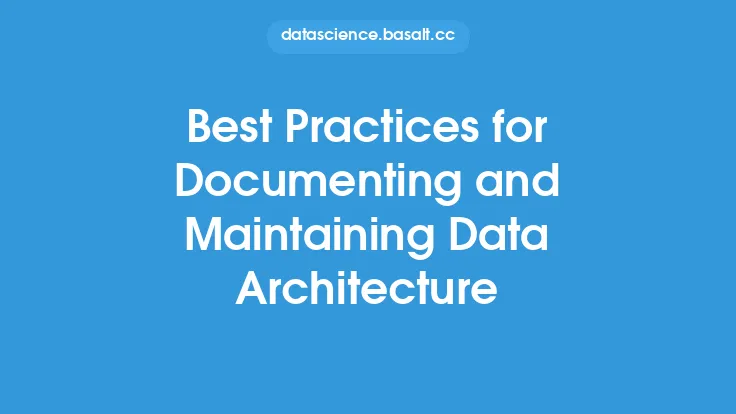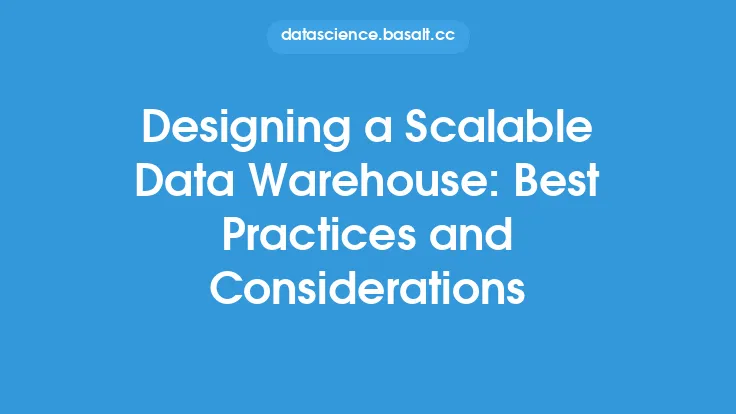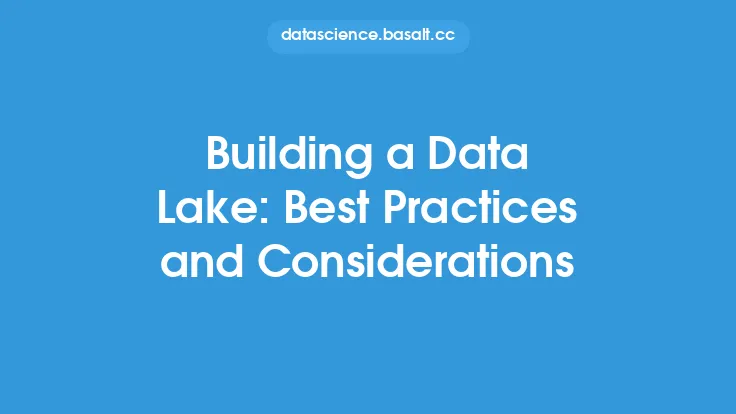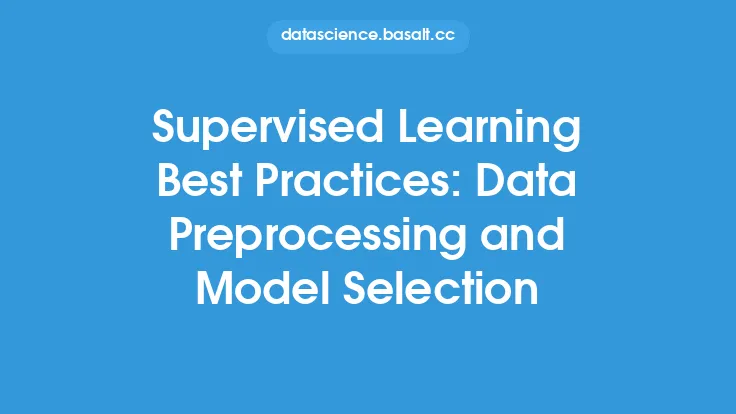Data architecture is the foundation of any data-driven organization, providing a blueprint for how data is collected, stored, processed, and utilized across the enterprise. It encompasses the overall structure and organization of data, including the relationships between different data entities, the flow of data across the organization, and the technologies used to manage and analyze data. A well-designed data architecture is essential for ensuring data quality, integrity, and accessibility, and for supporting business intelligence, analytics, and decision-making.
Introduction to Data Architecture
Data architecture is a critical component of data engineering, as it provides the framework for designing, implementing, and maintaining the data management systems that support an organization's data needs. It involves a deep understanding of the organization's data requirements, as well as the technical capabilities and limitations of the data management systems. A good data architecture should be scalable, flexible, and adaptable to changing business needs, and should provide a clear and consistent view of the organization's data assets.
Key Components of Data Architecture
A data architecture typically consists of several key components, including data sources, data storage, data processing, data integration, and data presentation. Data sources refer to the various systems, applications, and devices that generate data, such as databases, files, and sensors. Data storage refers to the repositories that hold the data, such as relational databases, NoSQL databases, and data warehouses. Data processing refers to the technologies and techniques used to transform, aggregate, and analyze the data, such as ETL (extract, transform, load) tools, data integration platforms, and analytics software. Data integration refers to the processes and technologies used to combine data from multiple sources, such as data virtualization, data federation, and data replication. Data presentation refers to the interfaces and tools used to deliver data to end-users, such as reports, dashboards, and data visualization software.
Data Architecture Layers
A data architecture can be organized into several layers, each with its own specific functions and responsibilities. The layers include the data source layer, the data storage layer, the data processing layer, the data integration layer, and the data presentation layer. The data source layer is responsible for collecting and providing data to the data storage layer. The data storage layer is responsible for storing and managing the data. The data processing layer is responsible for transforming, aggregating, and analyzing the data. The data integration layer is responsible for combining data from multiple sources. The data presentation layer is responsible for delivering data to end-users.
Data Architecture Patterns
There are several data architecture patterns that can be used to design and implement a data architecture, including the hub-and-spoke pattern, the point-to-point pattern, and the bus architecture pattern. The hub-and-spoke pattern involves a central hub that connects to multiple spokes, each of which represents a data source or destination. The point-to-point pattern involves direct connections between data sources and destinations, without a central hub. The bus architecture pattern involves a shared bus that connects multiple data sources and destinations, allowing for greater flexibility and scalability.
Data Architecture Tools and Technologies
There are many tools and technologies that can be used to design, implement, and maintain a data architecture, including data modeling tools, data integration platforms, data storage systems, and data analytics software. Data modeling tools, such as entity-relationship diagrams and data flow diagrams, can be used to design and document the data architecture. Data integration platforms, such as ETL tools and data virtualization software, can be used to combine data from multiple sources. Data storage systems, such as relational databases and NoSQL databases, can be used to store and manage data. Data analytics software, such as business intelligence tools and data science platforms, can be used to analyze and visualize data.
Best Practices for Data Architecture
There are several best practices that can be followed to ensure a well-designed and effective data architecture, including keeping it simple, flexible, and scalable, using standardized data formats and protocols, and providing clear and consistent documentation. Keeping the data architecture simple and flexible allows for easier maintenance and adaptation to changing business needs. Using standardized data formats and protocols ensures interoperability and compatibility between different systems and applications. Providing clear and consistent documentation ensures that the data architecture is well-understood and easily maintainable.
Common Data Architecture Challenges
There are several common challenges that can arise when designing and implementing a data architecture, including data quality issues, data integration challenges, and scalability limitations. Data quality issues can arise from incomplete, inaccurate, or inconsistent data, and can be addressed through data validation, data cleansing, and data normalization. Data integration challenges can arise from differences in data formats, protocols, and semantics, and can be addressed through data transformation, data mapping, and data virtualization. Scalability limitations can arise from increasing data volumes, velocities, and varieties, and can be addressed through distributed processing, parallel processing, and cloud computing.
Conclusion
In conclusion, data architecture is a critical component of data engineering, providing a blueprint for how data is collected, stored, processed, and utilized across the enterprise. A well-designed data architecture is essential for ensuring data quality, integrity, and accessibility, and for supporting business intelligence, analytics, and decision-making. By following best practices, using standardized tools and technologies, and addressing common challenges, organizations can create a robust and effective data architecture that supports their data-driven goals and objectives.





